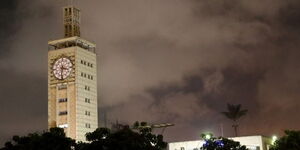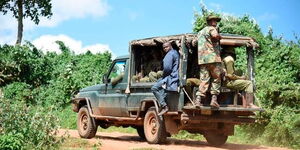It is often said that necessity is the mother of invention.
When faced with challenges such as water shortage, people resort to innovative solutions born out of sheer necessity.
While deploying abundant resources might be the most straightforward approach, it's not always possible due to financial constraints.
In places like Meru County, where water scarcity is a pressing issue, residents have demonstrated remarkable ingenuity to tackle this problem.
One such method involves harvesting water from clouds of fog and dew.
Jacob Murungi, a resident from Laare, Meru County, shared in an interview with NPR how the persistent water shortage prompted him and his fellow residents to think outside the box.
During the interview, Murungi said they are making the most out of the natural fog and dew to secure the water they need for their agricultural activities and daily needs.
Murungi, a mixed farmer with two cows, revealed that he and his wife spend their nights in the local forest collecting water from the trees. They bank on the fog that forms overnight and clings to trees to get the water they need.
Technique
Their water harvesting method involves tying a plastic jerrycan at the base of a tree, securing it with a plastic sheet pinned to the bark using thorns from nearby plants.
As night sets in and the mist descends, water condenses on the tree's surfaces.
This water then rolls down the trunk onto the plastic and into the jerrycan.
This simple yet effective technique allows them to collect water without the need for electricity or sophisticated tools, ensuring a sustainable water supply for their household and livestock.
Murungi shared that his family had to adopt this method out of necessity due to poverty, yet it has proven highly effective for them.
Yield
On an average night, a single tree can yield water to fill five jerrycans, totaling 20 gallons.
This water supply proves sufficient for their domestic needs, provided they have enough jerrycans to collect it.
Further, the harvested water not only sustains their family but it is also enough for their two cows, which play a crucial role in generating extra income through milk sales.
"Look around. They're everywhere," Murungi says while referring to his cows.
What makes this innovation particularly remarkable is its widespread adoption within the community.
Most people in their village rely on this method to harvest water, showcasing the ingenuity and resilience of the community members in overcoming their challenges.
Ancient Method
This method of harvesting water dates back to ancient times in the region, when the area residents used banana leaves and steel pots before the invention of plastic bags.
Fog harvesting is not only common in the Central Kenya but also in other parts of the world.
The method has gained significant popularity, especially in regions like Morocco, Chile, Yemen, Ethiopia, and across Southeast Asia, where water-laden air, carried by the wind from nearby coasts, provides a valuable resource.
Moreover, the technology of extracting moisture from the air has not only been in existence but has also witnessed continuous innovation.
These advancements have enabled even the driest areas to harvest water from the air in virtually any environment, marking a substantial leap in sustainable water solutions worldwide.












